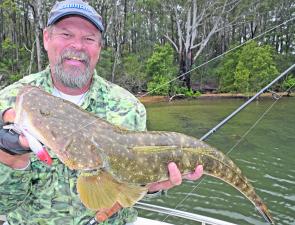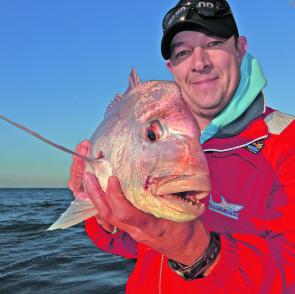With more and more anglers choosing to let go at least some of the fish they catch, it’s vitally important that we seriously evaluate our underlying motivations for killing or releasing certain fish.
Catch and release is a truly wonderful thing. It makes us feel all warm and fuzzy inside to let a good fish swim free. Most of us would also like to hope that smart catch and release angling strengthens our claims about being committed conservationists, dedicated to the sustainability of our sport. Surely such a stance gives us more credibility in our dealings with government agencies, the media and environmental groups? Well, yes… and (potentially) no.
Apparently the whole concept of catch and release is increasingly being called into question in some corners of the world (particularly parts of Europe). I’ve even heard reports that it has been banned in some countries! Anglers in those places are being encouraged or even legally mandated to catch only what they need, kill those fish humanely, take them home and eat them. At one level this sounds quite reasonable, but I wonder how it sits in terms of under-sized fish, protected species, bag limits, closed seasons and so on? The more cynical side of my nature strongly suspects that limiting, banning or even threatening to ban catch and release is simply another step on the rocky road to banning our sport altogether. I hope I’m wrong…
Thankfully, we’re a long way from such a dire situation in Australia. We can still go fishing in lots of places (less each year, to be sure, but still lots). And, in many instances, we can choose whether we wish to keep a few fish for the table (within the current rules and regulations), or unhook them and return all or part of our catch to the water. It’s a freedom we should never, ever take for granted.
Of course, there’s little point in releasing a fish if it’s going to succumb to the stresses and strains of capture and handling and turn up its fins within hours or days of being set free. Catch and release only makes good sense if the survival rates of those released fish are consistently high.
Thankfully, post-release mortality studies on a wide range of Australian fish species have shown generally excellent survival rates, often in the order of 80-90% and even better.
As you might expect, these rates vary considerably depending upon the exact species involved, how and where it was caught and, of course, how it was handled. Some fish (Spanish mackerel are a prime example) don’t handle well at all. Unfortunately, removing a large Spaniard from the water to unhook and photograph it before release almost always condemns that fish to death within hours or (at most) days of release. Some of the tuna family don’t fare much better in this regard. Fast, in-water release is really the only option. Even then, survival isn’t a certainty.
Reef fish pulled from deep water and exposed to the physical affects of sudden pressure change or barotrauma also have quite low survival rates.
At the opposite end of the spectrum, popular species such as bream, flathead, yellowbelly (golden perch) and bass all cope surprisingly well with careful handling. If they are mouth-hooked on a lure or fly (as opposed to gut-hooked on bait), the weather and water aren’t too hot, and their time out of the water is minimised, these fish almost always live to fight another day. That’s great news for those of us who, occasionally or frequently, practise catch and release.
Over coming issues we’ll look in far more detail at good fish handling practices designed to optimise catch and release survival rates. For the moment, however, I want you to take a moment to have a long, hard look at your own fishing choices, your motivations for releasing some fish while keeping others, and your genuine, honest expectations about the survival chances of those fish you do put back… It’s an interesting exercise!
Reads: 2738
Studies in the NT have shown post-release survival rates for black jewfish pulled from 10m or more of water to be practically zero. It’s much better to catch and keep one or two, then stop fishing for them.

If handled well and released promptly, dusky flathead (especially those mouth-hooked on lures) have an excellent chance of surviving to spawn again.

Golden snapper from deeper water are best viewed as a food resource. Even on lures, survival rates are low if these fish are hauled from more than 10-15m then returned to the water.

Snapper taken in shallower areas have excellent survival rates if promptly released, especially when hooked on lures. In deeper waters, their chances of living after release decline significantly.




